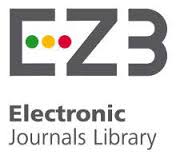DO PROCEDIMENTO DE ELUCIDAÇÃO ÀS CARACTERÍSTICAS DO CRIME DE HOMICÍDIO DOLOSO:
UMA ANÁLISE A PARTIR DAS DELEGACIAS DE POLÍCIA CIVIL DE APODI/RN E ITAÚ/RN
DOI:
https://doi.org/10.25245/rdspp.v12i2.1591Keywords:
Crime., Delegacias., Homicídio doloso., Inquérito Policial., Vítimas.Abstract
The elucidation of intentional homicide crimes represents one of the main challenges for police entities, given that the ineffectiveness of investigations is responsible for leaving the perpetrators of this type of crime unpunished. In this article we understand the impasses encountered in elucidating the crimes of intentional homicides registered in the 57th and 58th Municipal Civil Police Stations that cover the cities of Apodi/RN, Felipe Guerra/RN, Itaú/RN, Rodolfo Fernandes/RN and Severiano Melo/RN, in the period between 2018 – 2022. Firstly, we briefly address the concept of homicide and its relationship with public safety. Finally, we demonstrate, through graphs, an analysis of homicide crimes, highlighting data such as: TEA (Perpetrator Elucidation Rate), main characteristics of victims of intentional homicides in the police districts highlighted above, pointing out gender, age group, profession, race, marital status, as well as the geographic location in which the victim died and the instrument used to commit this type of crime. To this end, we carried out qualitative-quantitative research, collecting information available in police inquiries from the 57th and 58th Municipal Police Stations of RN. Therefore, we demonstrate in this work that the process of elucidating the crime of intentional homicide in the Police Stations of Apodi/RN and Itaú/RN faces numerous challenges and becomes one of the main concerns of the police, since the ineffectiveness of the investigations leaves the perpetrators of the crimes unpunished.
References
CANO, I.; RIBEIRO, E. Homicídios no Rio de Janeiro e no Brasil: dados, políticas públicas e perspectivas. In: CRUZ, M. V. G.; BATITUCCI, E. C. (Org.) Homicídios no Brasil. Rio de Janeiro: FGV, 2007.
CERQUEIRA, Daniel; BUENO, Samira (coord.). Atlas da violência 2024. Brasília: Ipea; FBSP, 2024. Disponível em: https://repositorio.ipea.gov.br/handle/11058/14031. Acesso em: 16 de agosto de 2024.
COSTA, Cleyton Fernando Paixão de Sousa. A (in) eficácia da investigação policial: análise da elucidação dos crimes de homicídios dolosos em Belém/PA. 87f. Dissertação (Mestrado em Segurança Pública) – Programa de Pós-Graduação em Segurança Pública, Instituto de Filosofia e Ciências Humanas, Universidade Federal do Pará, Belém, 2022.
FRAGA, P.C.P. Vítimas e agressores ou por que matamos os nossos jovens? Estudo sobre homicídios contra jovens em municípios baianos. In: FRAGA, P.C.P; IULIANELLI, J.A.S. (orgs.). O tempo real dos jovens. Juventude como experiência acumulada. Rio de Janeiro: Letra Capital, 2013, p. 27-49.
HUNGRIA, Nelson. Comentários ao código penal, volume V, arts. 121 a 136. 3ª ed. Rio de Janeiro: Editora Forense, 1955.
INSTITUTO SOU DA PAZ. Onde mora a impunidade? Porque o Brasil precisa de um Indicador Nacional de Esclarecimento de Homicídios, 3ª Edição - 2020. Disponivel em: https://soudapaz.org/o-que-fazemos/conhecer/pesquisas/politicas-de-segurancapublica/controle-de-homicidios/?show=documentos. Acesso em: 12/04/2024.
INSTITUTO DE PESQUISA ECONÔMICA APLICADA (IPEA). Nota Técnica Atlas da Violência, 2016. IPEA. Brasília/DF. 2016. Disponível em: 46 http://www.ipea.gov.br/portal/images/stories/PDFs/nota_tecnica/160405_nt_17_atlas_da_viol encia_2016_finalizado.pdf. Acesso em: 18 mar. 2024.
INSTITUTO DE PESQUISA ECONÔMICA APLICADA (IPEA). Atlas da Violência 2019. Brasília: Rio de Janeiro: São Paulo: Fórum Brasileiro de Segurança Pública. Disponível em: http://www.ipea.gov.br/atlasviolencia/download/19/atlas-da-violencia-2019. Acesso em: 16 ago. 2024.
LIEM, M., et al. “Homicide clearance in Western Europe”. European Journal of Criminology, vol. 16, 2018.
LIMA, F. M.; RIBEIRO, L. Será que vai virar processo? Determinantes da elucidação dos homicídios dolosos em uma cidade brasileira. Opinião Pública, 26(1), 66-97.
MINAYO, M. C. S.; SOUZA, de E. R. É possível prevenir a violência? reflexões a partir do campo da saúde pública. Ciência e Saúde Coletiva, Rio de Janeiro, n. 4, v. 1, p. 7-32, 1999.
MISSE, Michel. Crime, sujeito e sujeição criminal: aspectos de uma contribuição analítica sobre a categoria “bandido”. Lua Nova: Revista de Cultura e Política, n. 79, p. 15-38, 2010.
PETERSEN, N. “Neighborhood context and unsolved murders: the social ecology of homicide investigations”. Policing and Society, vol. 27, nº 4, p. 372-392, 2017.
SAPORI, L. F. Segurança pública no Brasil: desafios e perspectivas. Rio de Janeiro: Ed. FGV, 2007.
VILAÇA, Isabella Fonseca Torres. Vitimização por homicídio: perfil socioeconômico e criminal das vítimas. 2016. 104 f. Dissertação (Programa de Pós-Graduação em Segurança Pública), PPGSP, UFPA, Belém, Pará, Brasil, 2016.
UNODC – UNITED NATIONS OFFICE ON DRUGS AND CRIME. Global study on homicide 2019: trends, contexts, data. Viena: UNODC, 2019.
WAISELFISZ, J. J. Mapa da violência 2015: mortes matadas por armas de fogo. São Paulo: Instituto Sangari, Ministério da Justiça, 2015.
ZILLI, L. F.; VARGAS, J. D. O trabalho da polícia investigativa face aos homicídios de jovens em Belo Horizonte. Ciência e Saúde Coletiva, v. 18, n. 3, p. 621-632, 2012.




















